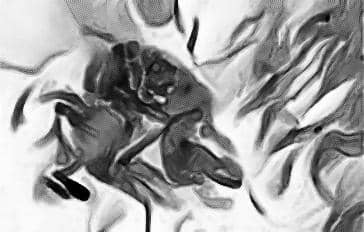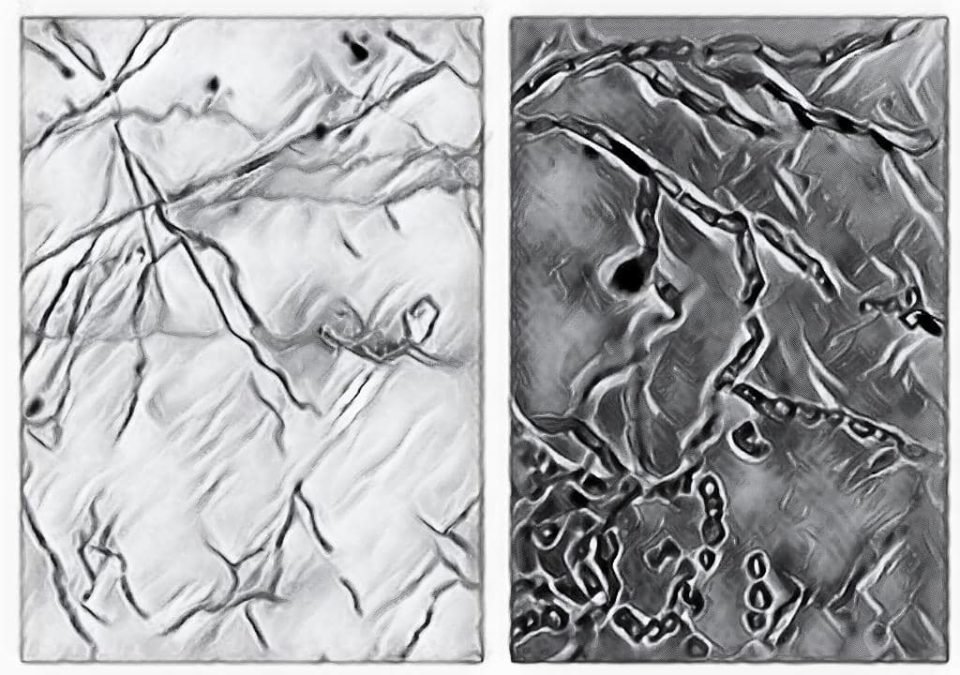Hey, Good to see you here 😀 …… In this Article, we’re gonna discuss the KOH Preparation for the detection of Fungal elements in the specimen….. If you have any queries, don’t forget to mention in Comments…
10% Potassium hydroxide (KOH) preparation is one of the easiest method used for the rapid detection of fungal elements like hyphae from the various clinical specimens.
KOH mount makes it more clear to visualize the fungal elements during direct microscopic examination. but the sensitivity of this test is quite low (approx. 30-60%) and cannot be used as the confirmatory test.
The principle of 10% KOH Preparation
Potassium hydroxide (KOH) is a strong alkali (having pH 11) which facilitates the microscopic observation of fungal elements.
When the specimen like Skin, Nails, Hair, sputum or any body fluids mixed with the !0% KOH solution, digests, softens and dissolve out the tissues & debris surrounding the fungal cells and the hyphae & conidia (spores ) of fungi can be easily observed under the microscope.
How to Prepare 100 ml of 10% KOH solution for KOH Test
Weigh 10-gram potassium hydroxide (KOH) pellets on a weighing scale.
Carefully Transfer the weighed KOH pellets to a screw-cap bottle.
Now Add 50 ml of distilled water and mix well until the KOH pellets completely dissolved.
Finally, add the remaining amount of distilled water and make the volume 100 ml.
Label the bottle containing 10% KOH solution and Mark it corrosive.
Note: Potassium hydroxide (KOH) is highly corrosive chemical, therefore handi it with care and make sure to mark bottle as Corrosive and tightly capped.
Store it at room temperature. The reagent is stable for about 2 years from the date of preparation.
Materials Required for the 10% KOH Preparation for fungal detection
- 10% Potassium hydroxide (KOH) Solution
- Alcohol Swab
- Glass slides
- Coverslips
- Scalpel or Curette
- Specimen (Skin, Nails, Hair etc.)
The procedure of 10% KOH Preparation for the detection of Fungal Elements
For Skin Specimen
Obtain the Skin specimen from the site of lesion, if there is characteristic visible lesion like dermatophyte ring then collect the specimen from the outer margin of the Dermatophyte ring.
If there is no characteristics lesions appear then obtain the specimen from areas where the skin appears to be scaling.
Use the edge of the sterilized glass slide or the scalpel to scrape off the surface skin scales.
Note: Do not use cotton swabs because the cotton fibers may resemble hyphae resulting in false positive results.
Place the sample on a labeled glass slide and instill a drop of 10% KOH solution then apply a coverslip.
For Nails Specimen
If it is possible to cut the nail then obtain the nail specimen using a straight or curved mayo and cut a small portion of the affected nail.
If it is not possible to cut the nail then scrape the nail area using a curette or scalpel.
Place the sample on a labeled glass slide and instill a drop of 10% KOH solution over the specimen then apply a coverslip on it.
For Hair Specimen
Clip off the lower end of the hair using a sterile straight mayo or scissors & also scrape the nearby area of the lesion with the help of sterile curette or scalpel.
Place the specimen onto a sterile glass slide and instill a drop of 10 % KOH over the specimen then apply a coverslip on it
Finally, Observe under the microscope initially with a low power objective lens (10x) with reduced light looking for fungal elements such as yeast cells and hyphae etc.
Afterward, Change to high power objectives (40x) in order to verify fungal elements seen with the low power 10x objective

Image Source: Microbeonline
Limitations of the KOH Preparation
Some Experience is required in order to get the best results of KOH preparation as the background artifacts are often confusing on KOH mounts.
The Clearing of some specimens especially the nails may require extended time and many time gives false negative results if not properly cleared.
The KOH preparation of the specimen should be done as soon as the specimen is obtained in order to get the true results.
Sometimes the quantity of few elements like yeast cells is not enough which can easily be observed and often skipped during observation if you’re not much experienced. so in order to get true results one must focus & observe carefully under the microscope.
Frequently Asked Questions (FAQs)
Q1. What is the role of 10% KOH in fungal
10% KOH is used in fungal identification to dissolve and clear the cellular material surrounding the fungal elements in a sample, making the fungal elements more visible under the microscope.
Q2. What is the function of 10% KOH in the direct examination of skin hair and nail scrapings?
The function of 10% KOH in the direct examination of skin, hair, and nail scrapings is to dissolve keratin and other cellular debris, leaving behind fungal elements that can be visualized under the microscope.
Q3. Which fungal elements are visible using the 10% KOH?
Fungal elements such as hyphae, spores, and yeast cells are visible using 10% KOH.
Q4. What is KOH for fungal detection?
KOH (potassium hydroxide) is a common reagent used in the direct examination of clinical specimens for the detection of fungal elements. It helps to dissolve and clear the cellular debris, making the fungal elements more visible under the microscope.
Q5. What is meant by 10% KOH solution?
A 10% KOH solution refers to a solution that contains 10% (w/v) potassium hydroxide dissolved in water. This solution is commonly used in clinical microbiology for the detection of fungal elements in clinical specimens.
Q6. What is the purpose of adding the 10% potassium hydroxide KOH solution to the patient sample in the wet prep procedure?
The purpose of adding 10% KOH solution to the patient sample in the wet prep procedure is to dissolve and clear the cellular debris, leaving behind any fungal elements present in the sample. This allows for easier visualization and identification of fungal elements under the microscope.
User Review
( votes)
Laboratory Hub aims to provide the Medical Laboratory Protocols & General Medical Information in the most easy to understand language so that the Laboratory Technologist can learn and perform various laboratory tests with ease. If you want any protocol to be published on Laboratory Hub, Please drop a mail at contact@laboratoryhub.com. Happy Learning!

